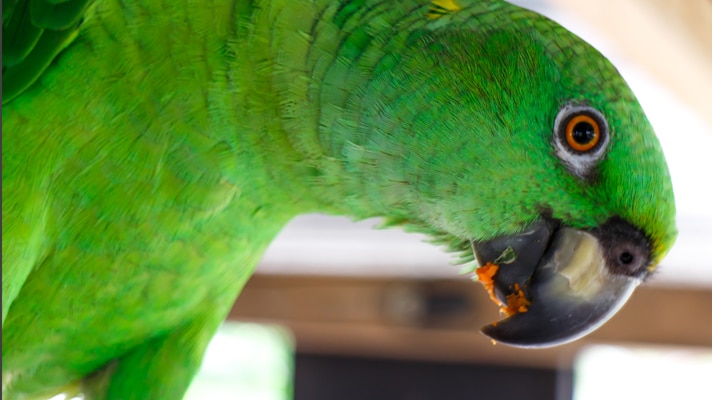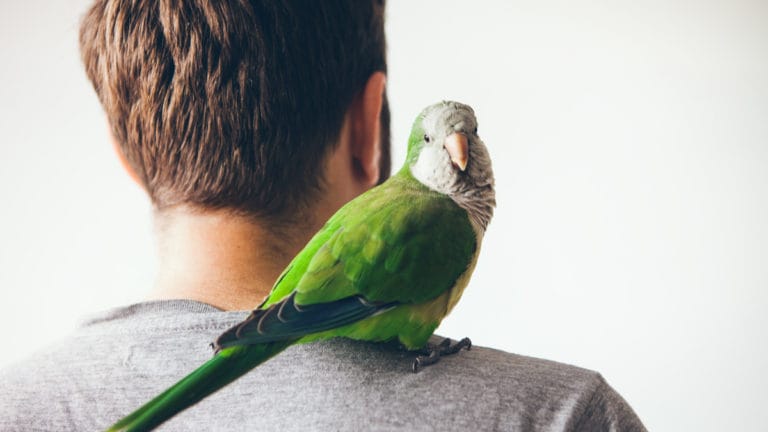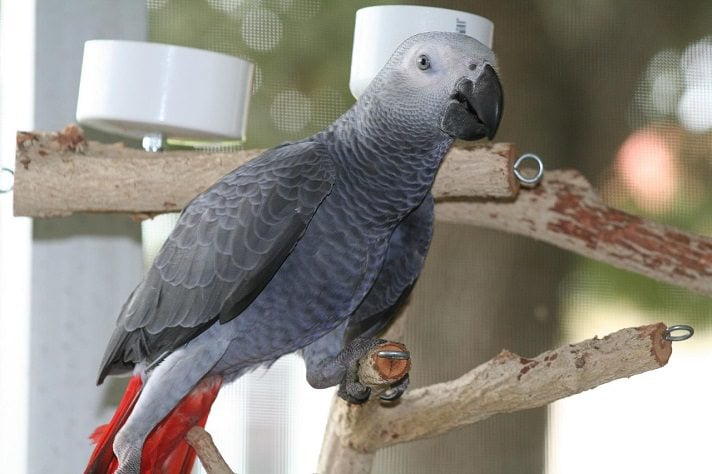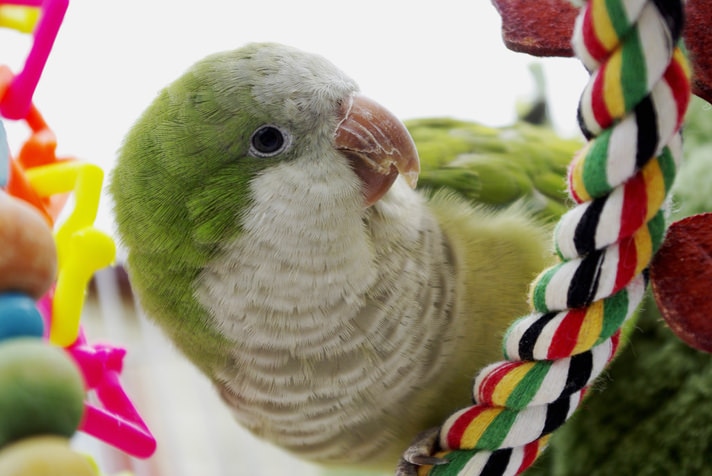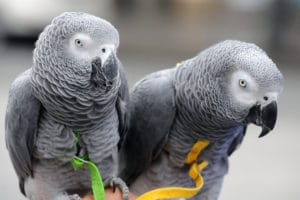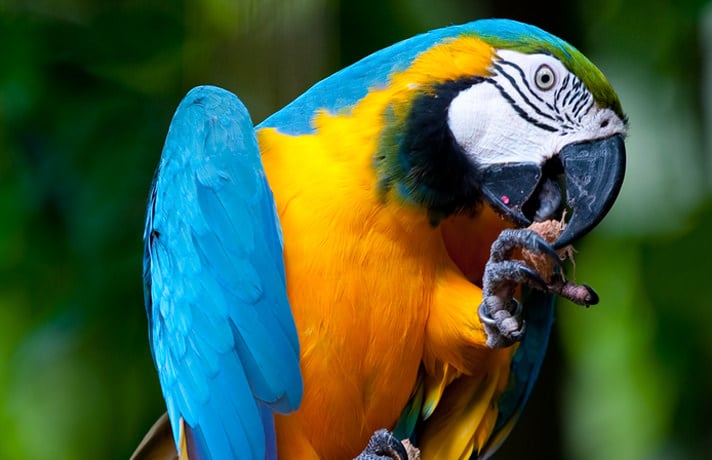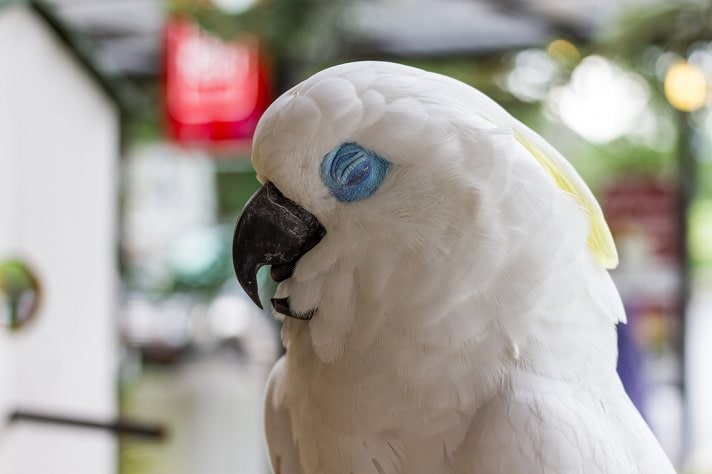Today’s parrot bird food comes in many forms. Pet bird owners feed bird seed, pellets, table foods, soak and cook mixes, vegetables, proteins, fruits and treats to their birds, so it’s easy to get confused about what to feed your specific pet bird. Find out all about parrot bird food info you need to know with our simple bird food basic primer below.
Bird Food: Seeds
Bird seed mixes are often the staple food for many pet birds and parrots. Common seeds found in bird food seed mixes include safflower seeds, sunflower seeds, millet seed, canary seed, hemp seed, thistle seed and more.
A seed consists of four parts: the germ, the cotyledon, the endosperm and the hull. What pet birds eat are ungerminated seeds, which have not started growing to become plants. A bird hulls the seed so it can eat the germ, the cotyledon and the endosperm. Pet birds can eat germinated seed, too, when you sprout bird seed.
Bird Food: Pellets
A pellet usually consists of ground up grains and seeds, vitamins and minerals that are baked at a low heat and formed into shapes. The different shapes that pellets are formed in can vary from little spheres to pellets that look like Cheerios. Some pellets are colored to appeal to your bird, while other pellets are natural colors, mostly browns. A number of pelleted diets are available to buy. Work with your avian veterinarian to determine the best pelleted diet for your pet bird. Some aviculturists do not recommend feeding dry pellets to lories and other softbills. Talk with your veterinarian about the best bird foods to feed your softbills.
Bird Food: Vegetables
Many vegetables are packed full of vitamins, fiber, protein, calcium and other nutrients. Offer your bird freshly washed freshly washed vegetable, such as dark-leafy greens, such as parsley, spinach, kale, collard greens and Swiss chard. Bell peppers, squashes (e.g. pumpkins, butternut, spaghetti, plus roasted seeds), sweet potatoes, green beans and carrots are also great for your bird. Mix in legumes, sprouts and whole grains (e.g., quinoa, brown rice, oats) with your bird’s vegetables. Do not put any sort of dressing on your bird’s vegetables, and remove the food after a few hours so it doesn’t spoil.
Bird Food: Protein
Foods high in plant protein are broccoli, quinoa, soybeans (edamame), legumes/beans, nuts and sprouts. You can also feed moderate amounts of animal-based proteins, such as well-cooked, unseasoned chicken, turkey or fish. Unseasoned scrambled eggs are another option, and you can crumple up and cook the shell with the egg. Some birds, like macaws, need extra protein sources, like nuts. Good nuts to offer are walnuts, almonds, hazelnuts, macadamia nuts and more. Feed plain nuts only, not salted or honey-roasted, etc.
Bird Food: Fruits
Feed fruits high in vitamin A. Some fruits high in vitamin A content include mangoes, papayas, cantaloupe, persimmon, apricots and pomegranates. Feed lots of berries, like blueberries, strawberries, etc. Fruit is a great visual treat for your bird as well; fruits are so bright and colorful, your bird will have to give it a try!
Bird Food: Cook Mixes
Cooking for your bird can be fun! A number of soak-and-cook vegetable mixes and birdie bread/muffin packages are available. Follow the instructions, and you can serve your bird a home-cooked meal in minutes.
Bird Food: Treats
There is nothing like a treat every now and then! Many bird food companies offer different bird treats that you can give your bird. These can be fed every now and then, or used when you are training your bird.
Bird Food: Portions
How much should you feed? Talk to your avian veterinarian about the specific portions to give your bird. Many veterinarians recommend a 1/4 cup of pellets per day for small birds and a 1/2 cup of pellets per day for larger parrots. Follow your bird food package instructions, as well.
When feeding fruits and vegetables, the smaller the portion you give, the better. If your bird is eating so much food that it doesn’t eat its primary food (which should be a pelleted or formulated food diet), it’s time to feed less vegetables, fruits and other items.
Put yourself in your bird’s place. If you are a cockatiel, a single grape is the size of your head and that’s far too much food to eat for one bird! Feed a 1/2 to 1 teaspoon of fruit to a small bird, and a tablespoon of fruit for larger birds. Feed half of a spoonful of vegetables and a 1/2 tablespoon of a protein source to your smaller birds. Feed a small spoonful of vegetables and 1 1/2 tablespoon of a protein source to your larger bird.
Bird Food: Foraging
You might know the term foraging from dozens of nature television shows. To forage means to actively search out food, and wild parrots spend up to 80 percent of their day foraging! This is an activity that takes up a lot of energy — something that can be missing for your bird at home, which only needs to visit its food bowl for a meal.
Make life exciting for your bird and help it burn off some energy by providing foraging activities. Sprinkle pellets in a tray of pebbles, so your bird has to pick out the food from between the rocks. Put food in a bird-safe cardboard box so your bird has to tear it apart to get to its meal. Hang food off bird-safe branches, or wedge it between cages bars or tie it up in paper. There are many different ways to offer foraging activities for your bird. The more you do, the happier your bird will be following its natural instincts.
Posted by: Chewy Editorial
Featured Image: riderfoot/iStock/ThinkStock
Share:
